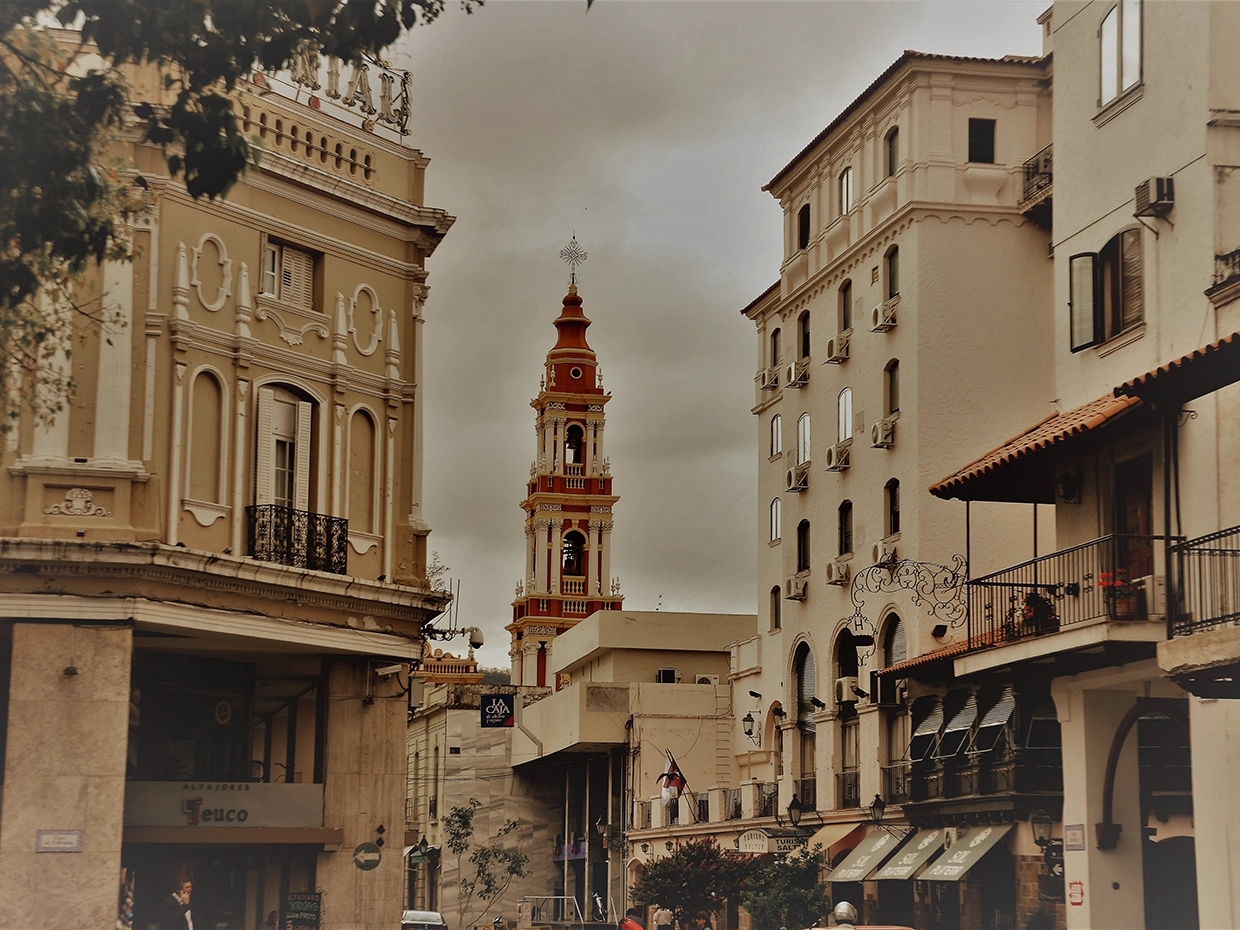The city of Salta is one of the most beautiful cities in Argentina, with well-preserved architectural heritage and rich history.
A city with a lot of history
Its foundation dates back to 1582 and the city has been the scene of important historical events, such as the Battle of Salta in 1813, where the army commanded by Manuel Belgrano defeated the royalist forces.
Salta was a strategic point during the war for independence, being between Lima (royalist) and Buenos Aires (independence), being a key barrier against the Spanish who were trying to enter the territory.
But what makes it relevant today is that it is a city that has maintained a marked Hispanic appearance over the years, with an urban profile characterized by low buildings, narrow streets and colonial architecture that distinguishes it as a capital with great identity. historical and cultural within Argentina.
9 de julio Square
It is the main square of the city and the heart of the historic center. Here you can find the Salta Cathedral, the Cabildo and several restaurants and cafes.

Cathedral
It is one of the city’s postcards and we are sure that you will take several photos. Officially called the Cathedral Basilica of Salta, it is one of the most important religious buildings in Salta.
It was built in neoclassical style between 1856 and 1882 and has a white and pink façade, with decorated columns and pediments. Inside it can accommodate about 900 people and you will be able to appreciate several works of art, including the main altar carved in cedar wood and covered in gold leaf.
There are also frescoes on the ceiling and a large number of religious paintings on the walls. The Cathedral is considered one of the most important historical monuments in the city, not only for its architectural value and religious significance, but also for being the place where the remains the restof General Martín Miguel de Güemes, hero of Argentine independence.
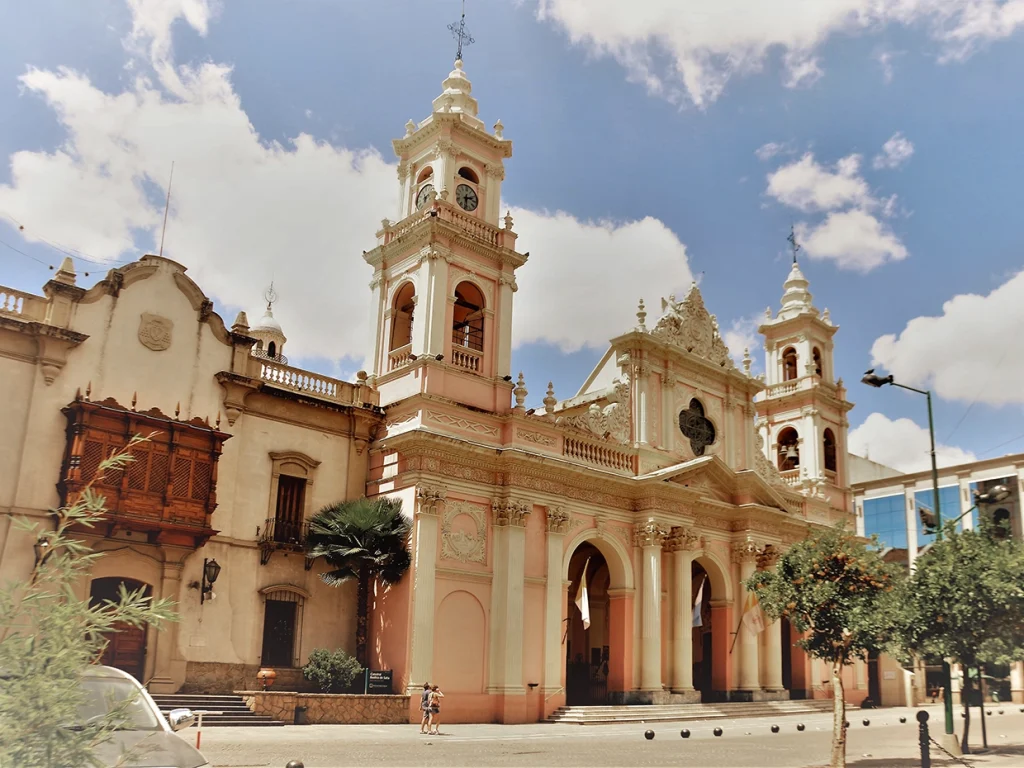
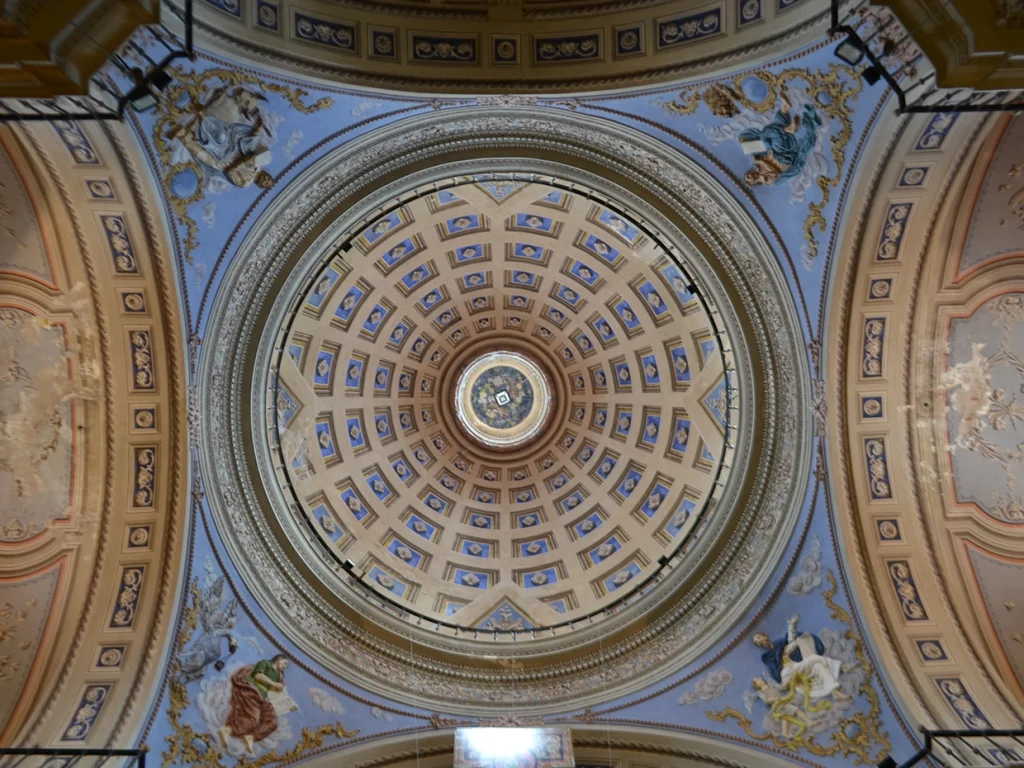
Council [Cabildo]
The Council of Salta building was built in the 17th century and has witnessed several important moments in Argentine history. Important political and social meetings were held here during the colonial era and the fight for independence.
It is one of the best examples of Spanish colonial architecture in Argentina. It has a simple but imposing façade, with a bell tower in one of its corners. Inside you can see carved wooden ceilings, patios and stone stairs.
Currently, the Cabildo de Salta functions as a museum where you can find permanent and temporary exhibitions related to the history and culture of the city and the region. In its rooms, objects, documents and works of art that tell the history of the place are exhibited. From its Cabildo terrace you can have a panoramic view of the city. It is an ideal place to take photographs and appreciate the city’s architecture.
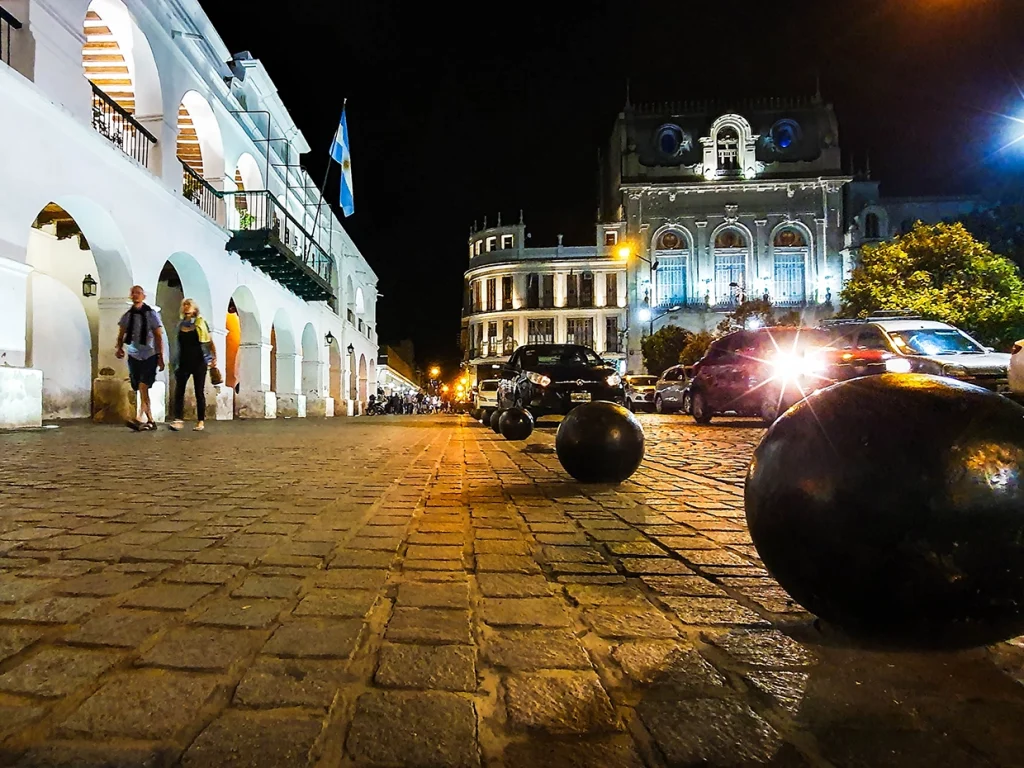
Museum of High Mountain Archeology (MAAM)
It is a museum dedicated to the archeology and history of the region.
If you are interested in Inca culture, this museum is famous for its collection of Llullaillaco children, which are three mummified bodies of Inca children that were found at the top of the Llullaillaco volcano, in the province of Salta.
These children were sacrificed as ritual offerings more than 500 years ago and, due to the extreme conditions of the mountain, have been exceptionally preserved. In addition, the museum has a series of exhibitions that illustrate the life and culture of the pre-Hispanic peoples of the Andean region, allowing visitors to delve into the history and archeology of this region of Argentina.

America Cultural Center
The building was built in 1913 in a French academic style and was the headquarters of the traditional and aristocratic Club 20 de Febrero. Designed by Architect Arturo Prins, it is characterized by the use of iron and bronze columns and profiles, Venetian-type polychrome floors, oak parquet from Slovenia and stained glass imported from Milan.
In 1950 it began to function as Government House, until 1987 when it was moved, leaving the building used for cultural and protocol activities. You can visit it and admire its architecture and surely see a temporary art exhibition that is frequently organized there.
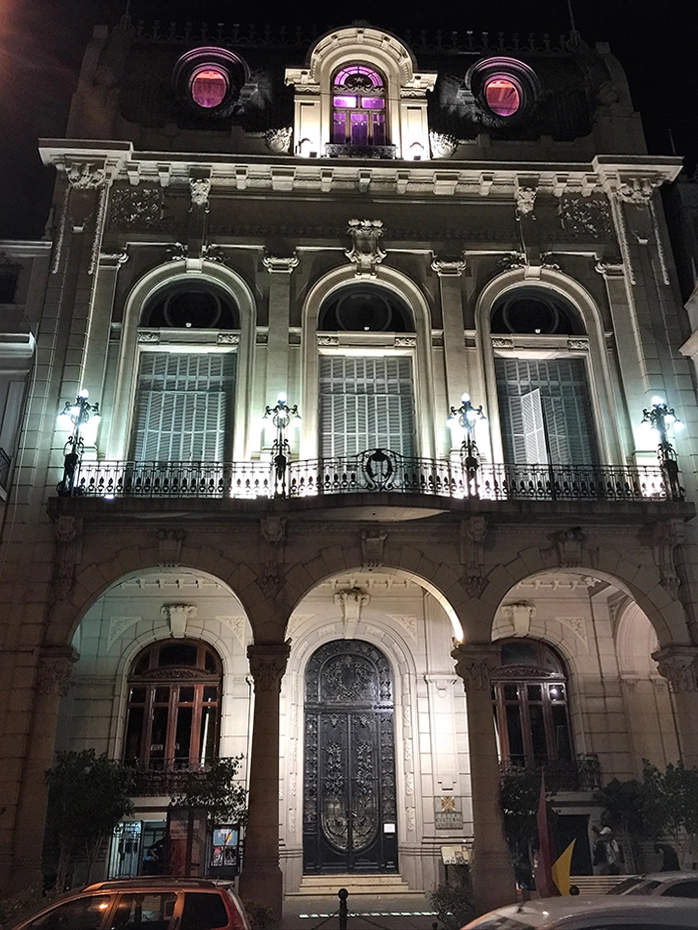
San Bernardo Hill
It is located in the northern part of the urban center and is one of the main points of interest for visitors due to the impressive panoramic views it offers of the city and its surroundings.
Climb
The hill has a height of approximately 1,454 meters above sea level. To reach the top, you can choose to take a cable car or walk along a pedestrian route that winds up the hillside. The ascent on foot is a challenging hike, but rewarded with panoramic views and spectacular landscapes.
In addition to enjoying the views, Cerro San Bernardo offers the possibility of doing activities such as mountain biking, hiking and landscape photography.
Cableway
If you prefer a more comfortable experience, the cable car is a popular option. The cable car ride offers a unique perspective of the city and its surroundings as it gently ascends to the top.
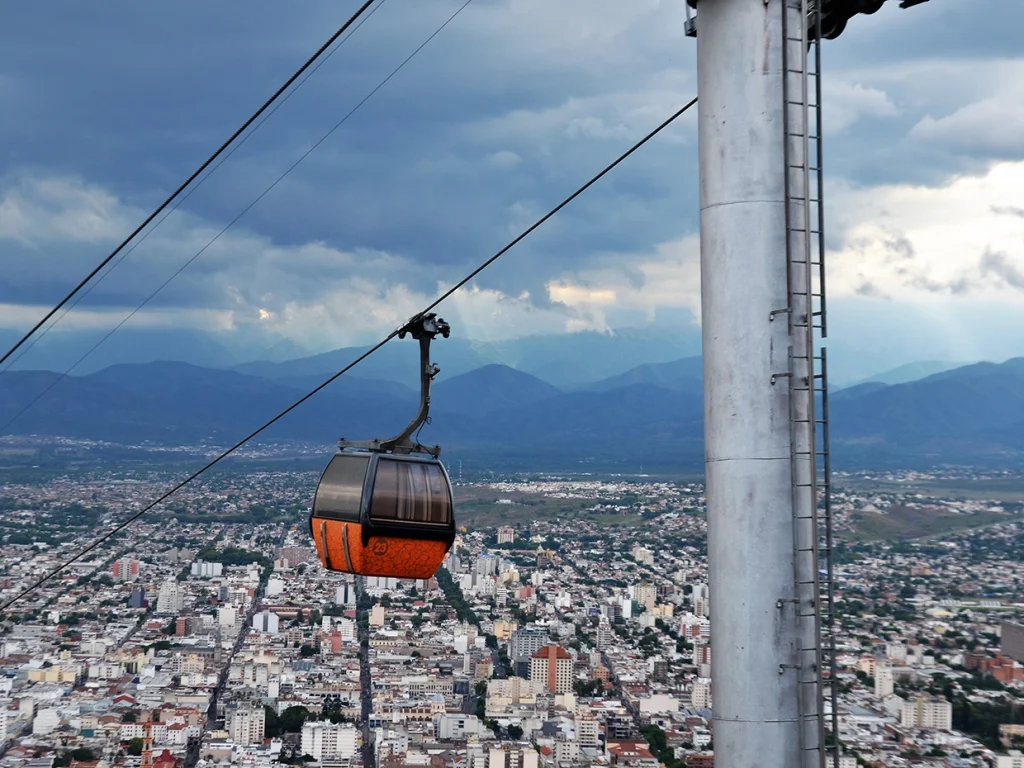
Viewpoints
Once you reach the top of Cerro San Bernardo, you will find several strategically located viewpoints from where you can admire panoramic views of Salta and the surrounding area. You will be able to appreciate the beauty of the city, the Arenales River and the surrounding hills.
Statue of Christ the Redeemer
At the top of the hill, there is an imposing statue of Christ the Redeemer, similar to the one found in Rio de Janeiro, Brazil. The statue is a religious symbol and an important landmark in Salta.

Park and recreational areas
The hill has green areas and recreational spaces where visitors can enjoy a quiet walk, have a picnic or simply enjoy the outdoors.
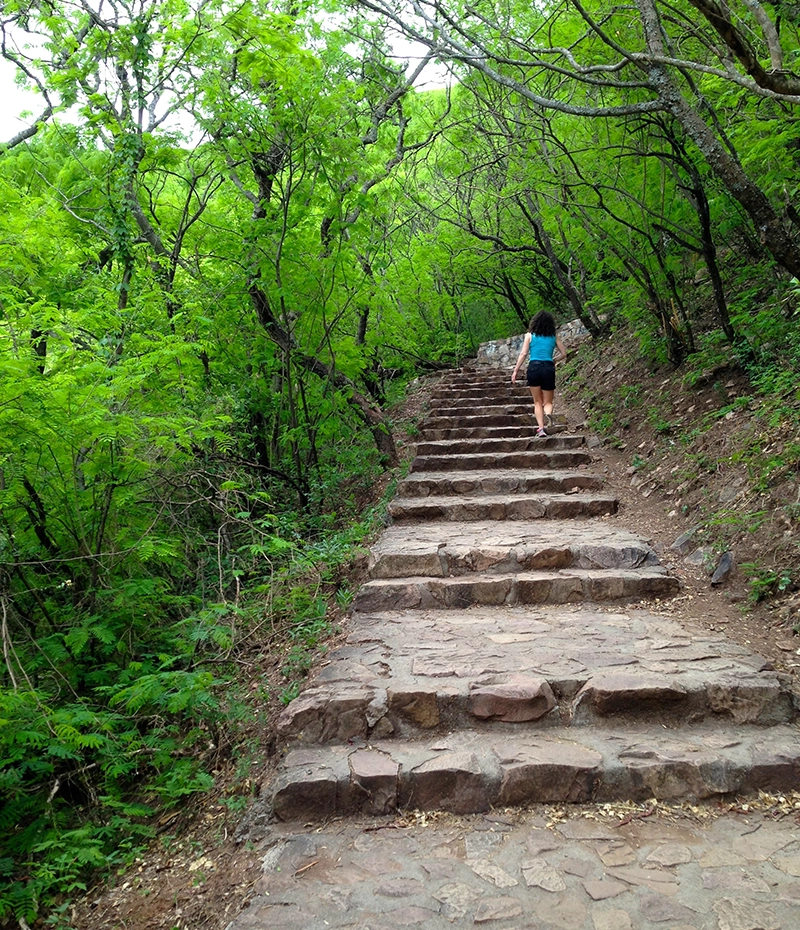
Amphitheater
At the base of the hill, there is an open-air amphitheater where cultural events and shows are held, especially during festivals and special events in the city.
San Francisco Convent
It is one of the most emblematic and oldest buildings in the city. It was founded in 1626 by Franciscan friars and has been an important religious and cultural center over the centuries.
If you visit this colonial building you will undoubtedly appreciate its sober but imposing façade, with elements of Spanish and Andean influence. Inside, there are beautiful cloisters, patios and corridors that reflect the characteristic simplicity of colonial religious architecture.
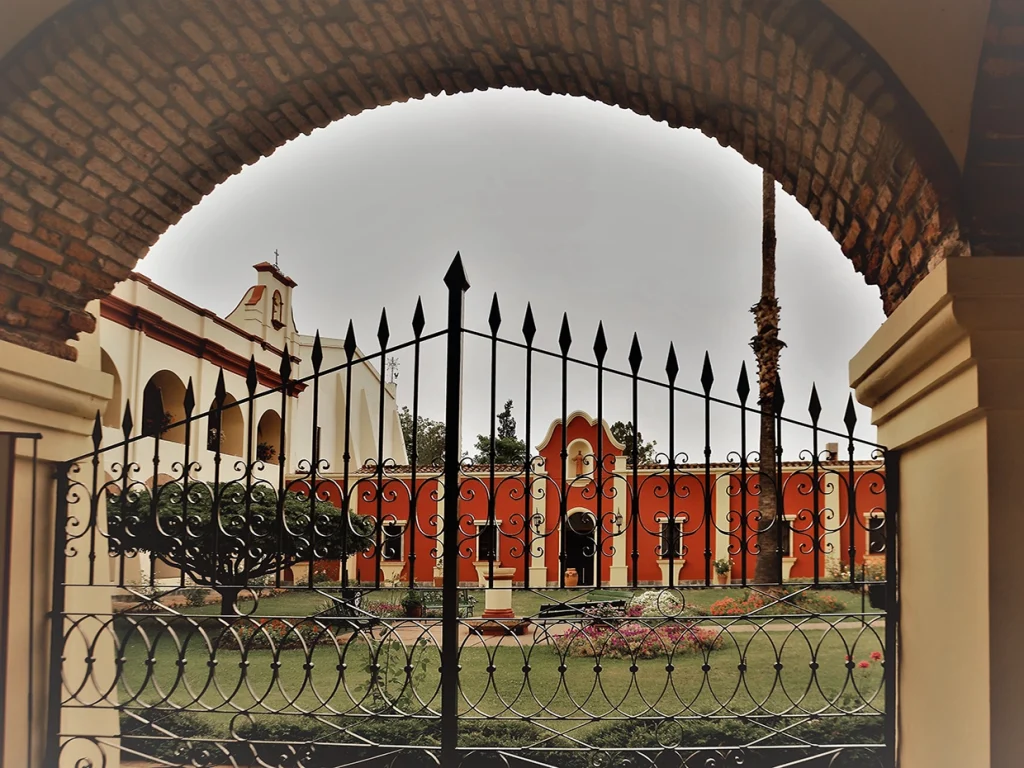
Inside the convent is the Church of San Francisco, which stands out for its baroque style and its imposing tower. It has a rich interior decoration, with golden altars, religious paintings and sculptures. Part of the convent has been converted into a museum that houses an important collection of sacred art and historical objects related to the Franciscan order and the history of the city of Salta.
In the museum, you can see religious art, ancient books, liturgical ornaments and other historical treasures. Next to the Convent of San Francisco is the Chapel of San Bernardo, a small Gothic-style chapel that is also part of the Franciscan complex. This chapel is famous for housing the image of the Virgin of the Miracle, one of the most important and venerated Marian devotions in Salta. The convent offers guided tours that allow you to explore both the church and the museum and learn about the history of the Franciscan order and its influence in the region.
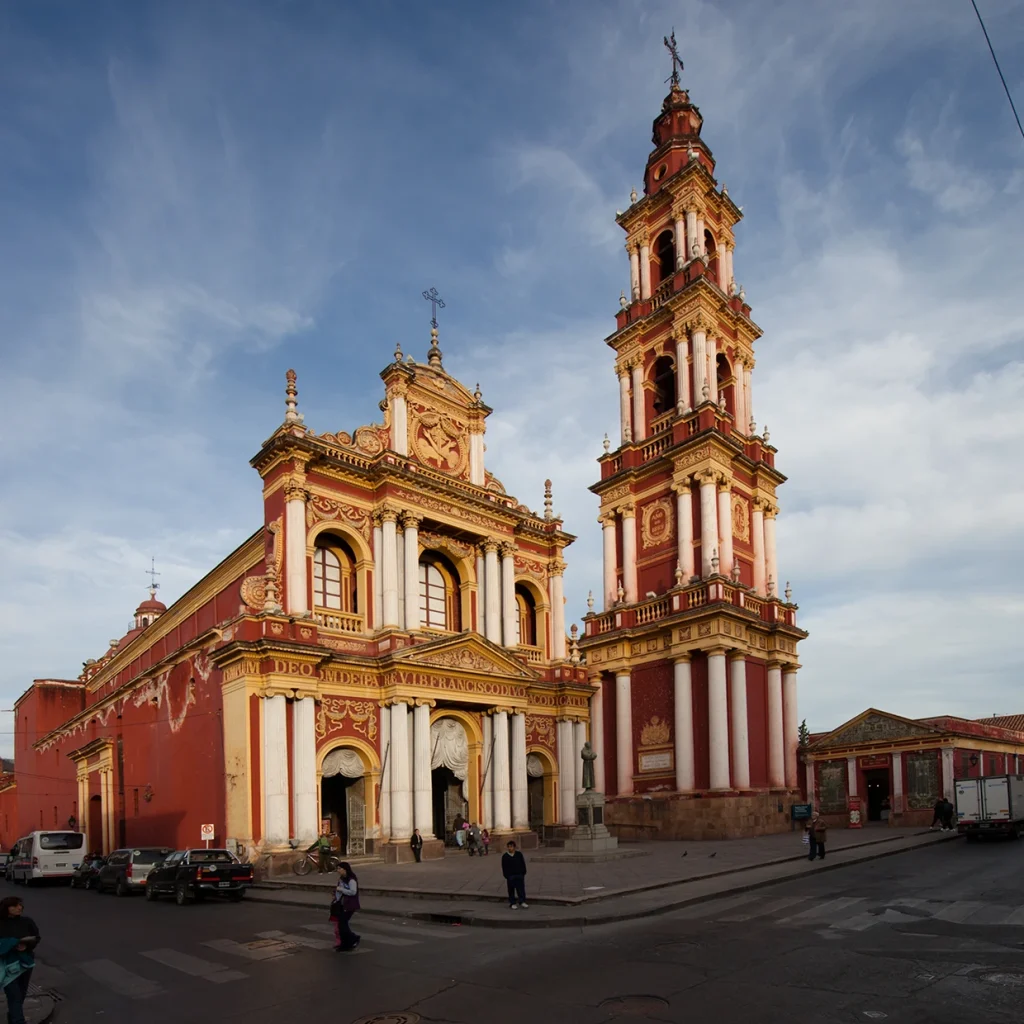
Handicraft market
If you like handicrafts, this is an excellent shopping tour. Here you can find local handicrafts and souvenirs, such as weavings, ponchos, pottery and jewelry.
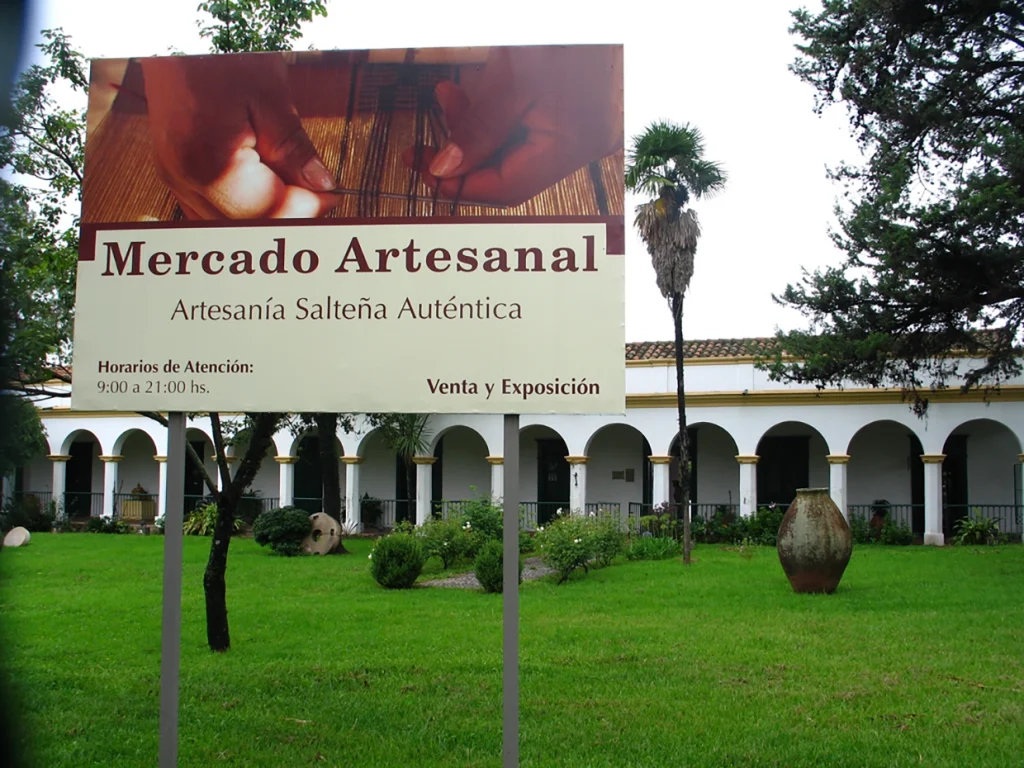
Church and Convent of San Bernardo
It is an impressive colonial building located at the base of San Bernardo Hill. In addition to its architecture, it also stands out for its bell tower, from where you can see views of the city.

WHY NOT VISIT…?

By car, the distance between Salta and Cafayate is 190 km. It takes approximately 2h 50m to drive from Salta to Cafayate. There are also organized tours or you can take a bus and stay overnight in the town of Cafayate.

These are just some of the options that Salta has to enjoy. Be sure to schedule the best dates to visit since the city has a large number of festivals and celebrations throughout the year, such as the Harvest Festival, Tradition Week and Carnival.


